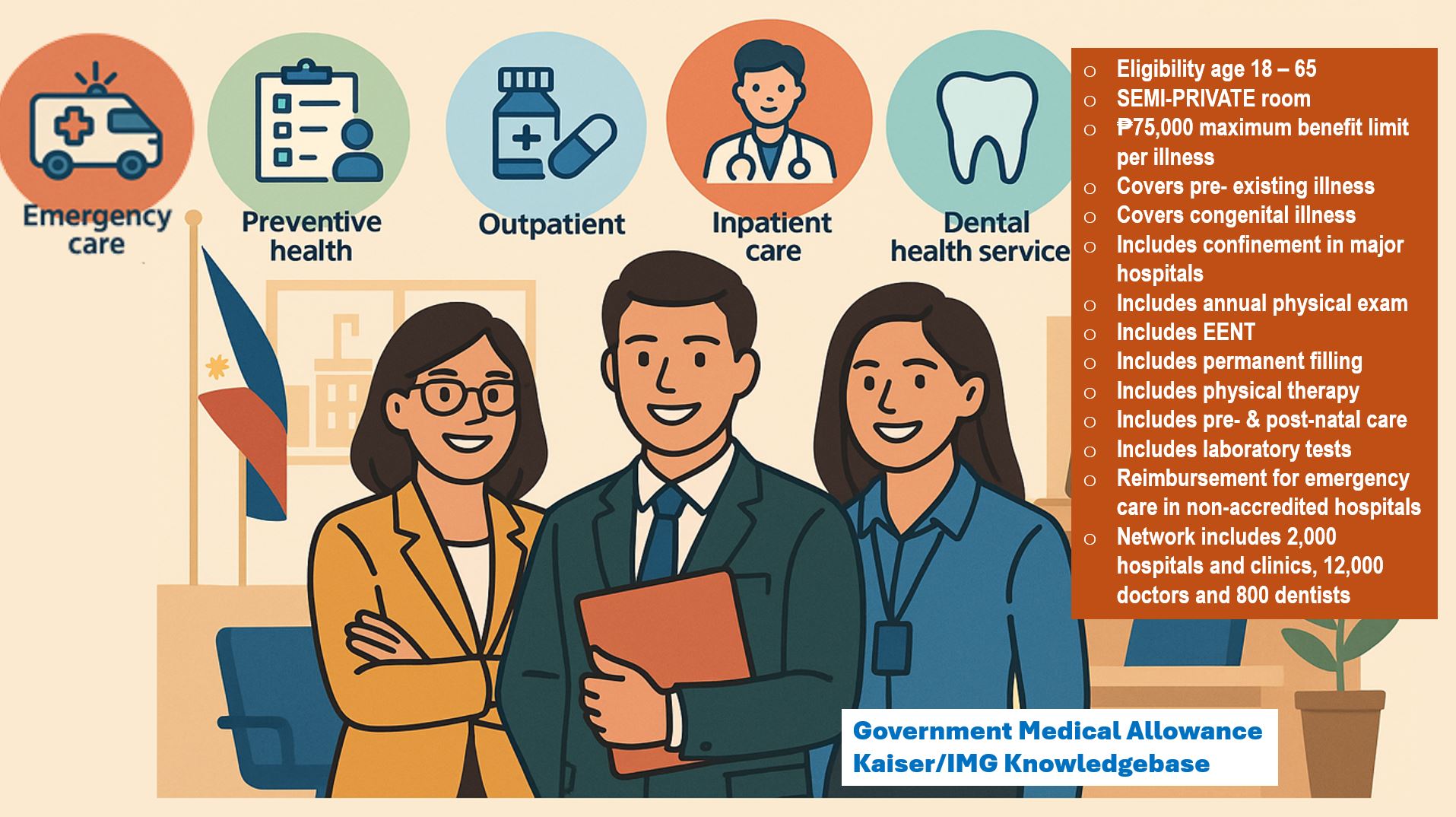
National HealthCare Shield

How Can the ₱7,000 EO 64 Medical Allowance Be Used?
Procurement & Opt-In Methods under DBM Circular 2024-6Why This Matters
EO 64 provides a ₱7,000 annual medical allowance for civilian government employees, strictly for HMO-type benefits. DBM Budget Circular 2024-6 explains the authorized ways to use this allowance — some involve procurement, some involve opt-in enrollment and remittance facilitation.
1. Agency Procurement – Section 7.1.1(i)
What happens: The agency procures an HMO plan for all covered employees.
How it works
- The agency conducts bidding or an allowed alternative mode under RA 9184.
- The agency signs the contract with the HMO provider.
- The ₱7,000 allowance is applied to cover the cost of the group HMO plan for each eligible employee.
2. Employees’ Association Procurement – Section 7.1.1(ii)
What happens: A registered employees’ union, cooperative, or association procures the HMO for its members, but the agency still handles the payment flow.
How it works
- The association signs the contract with the HMO provider.
- The association certifies the list of members who will use their ₱7,000 allowance for this plan.
- The agency remits each member’s ₱7,000 allowance directly to the HMO provider based on the association’s certified list.
- The association never holds the funds — it only manages the contract and enrollment certification.
3. Invididual Availment – Section 7.1.2
Yhr allowance will be given in cash form for those who will (i) avail their own or (ii) pay/renew their existing HMO-type benefit.
Common Uses
- Employees who already have an HMO plan use the allowance to renew it.
- Employees who are dependents under a spouse’s or child’s corporate HMO use the allowance to help pay for that coverage.
- Agencies may offer payroll deduction and remit the allowance directly to the HMO with employee authorization.
How it works
- The employee selects an HMO plan or shows proof of an existing plan.
- The allowance is given to the employee in cash
- The agency keeps a record of payments and authorizations following GAM (Government Accounting Manual) rules.
Group Opt-in
- Agencies may facilitate enrollment and payment of individual employees collectively to enable employees access to group HMO plans
How it works
- The employee selects a group HMO plan
- agency remits allowance to employee via payroll disbursement, and/or
- employee authorizes agency to deduct from payroll, enroll employee and remit payment to HMO provider
- agency facilitates employee enrollment and payment to group HMO plan.
- agency maintains records of authorizations and remittances in line with the Government Accounting Manual (GAM).
4. Reimbursement – Section 7.1.3
What happens: Employees may be reimbursed for health-related expenses or HMO payments, but only in specific situations.
Common Uses
- Employees in GIDA (Geographically Isolated and Disadvantaged Areas) where no HMO operates.
- Employees whose HMO application was denied due to age or health conditions.
- Employees in locations where no HMO services are available.
How it works
- The employee submits receipts or proof of qualified medical payments.
- The agency verifies and reimburses the expense from the ₱7,000 allowance allocation.
- All reimbursements are documented and reported per GAM rules.
Key Compliance Notes
- Follow the Government Accounting Manual (GAM) for all recording, remittance, and liquidation of funds.
- Always secure written employee authorization for any remittance to an HMO.
- COA should be notified in writing when an agency facilitates opt-in enrollments or payroll remittances.
Summary
- Agency Procurement – The agency conducts bidding (RA 9184) and buys an HMO plan for employees.
- Association Procurement – A union/co-op procures the HMO; the agency remits the allowance to the association, which pays the HMO.
- Opt-In Enrollment – Employees choose their HMO; the allowance is either given in cash or remitted directly to the provider with employee authorization.
- Reimbursement – Only for employees in GIDA areas, denied HMO applications, or when no HMO is available.
The opt-in enrollment method is the most practical and flexible approach — employees keep choice of HMO, agencies stay compliant, and payments can be remitted cleanly to providers with proper authorization.
Let’s Talk!
We offer:
- FREE Proposal
- FREE Group Presentation (Online or On-site)
- Ongoing Support and Dedicated Liaison Officer
Kaiser International HealthGroup
Your 1st Name in Healthcare- ₱ 7k premium
- ₱ up to 75k Maximum benefit limit per illness
- Eligibility age 18 - 65 years old
- Covers pre-existing diseases
- Includes Annual Physical Examination
- Preventive Healthcare
- Outpatient Card
- Inpatient Care
- Emergency Care
- Dental Card
- Includes Financial Assistance (in case of death, dismemberment)
- Includes Pre- / Post-natal checkup
- Includes Physical Therapy
- Includes vaccination for animal bites
